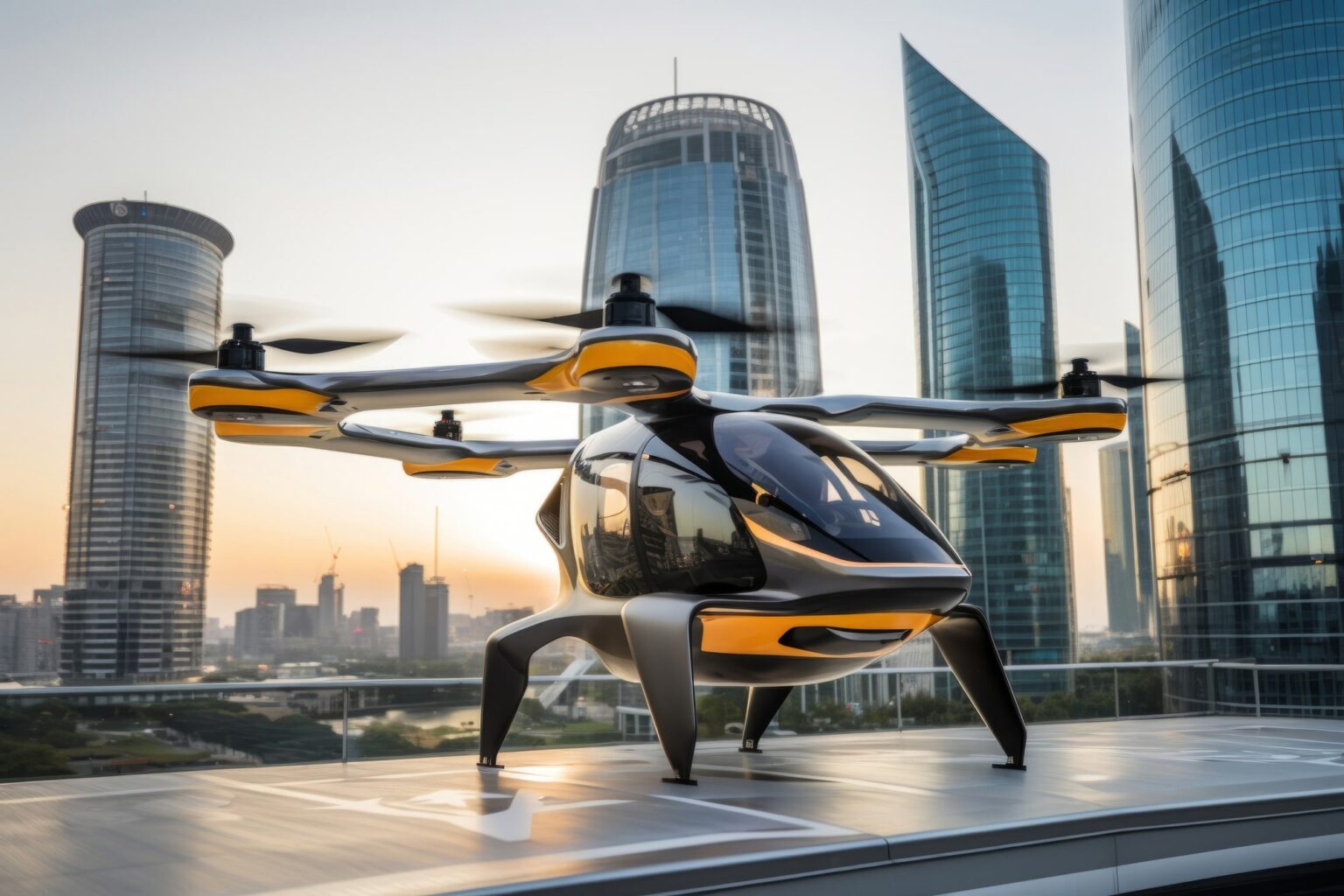Urban Air Mobility (UAM) solutions represent a revolutionary approach to transportation, offering efficient, safe, and environmentally friendly aerial mobility within urban areas. Here’s how UAM is shaping the future of transportation:
- Vertical Takeoff and Landing (VTOL) Aircraft: UAM relies on VTOL aircraft, including electric vertical takeoff and landing (eVTOL) aircraft and electric fixed-wing aircraft, capable of taking off and landing vertically without the need for a runway. These aircraft are powered by electric propulsion systems, reducing noise pollution and emissions compared to traditional combustion engines. VTOL aircraft enable point-to-point aerial transportation, bypassing traffic congestion and infrastructure limitations in urban areas.
- On-Demand Aerial Ridesharing: UAM enables on-demand aerial ridesharing services, similar to ride-hailing services such as Uber and Lyft but with aircraft instead of cars. Passengers can use mobile apps to request flights, select departure and destination points, and book seats on VTOL aircraft operated by UAM service providers. On-demand aerial ridesharing offers convenience, flexibility, and time savings for urban commuters, reducing travel times and improving accessibility to remote locations within cities.
- Urban Airports and Vertiports: UAM infrastructure includes urban airports and vertiports, dedicated facilities equipped with landing pads, charging stations, passenger terminals, and maintenance facilities for VTOL aircraft. Urban airports are located within city centers or on the outskirts of urban areas, providing convenient access to aerial transportation services for residents and visitors. Vertiports serve as decentralized hubs for VTOL operations, enabling efficient passenger boarding, disembarkation, and aircraft turnaround.
- Air Traffic Management Systems: UAM relies on advanced air traffic management (ATM) systems to ensure safe and efficient operations of VTOL aircraft in urban airspace. ATM systems use real-time data, predictive analytics, and machine learning algorithms to manage airspace congestion, prevent collisions, and optimize flight paths for UAM operations. Integration with existing air traffic control systems and collaboration with regulatory authorities ensure compliance with airspace regulations and safety standards.
- Autonomous Flight Technologies: UAM platforms leverage autonomous flight technologies to enhance safety, reliability, and efficiency of VTOL operations. Autonomous flight control systems, sense-and-avoid sensors, and collision avoidance algorithms enable VTOL aircraft to navigate urban airspace autonomously, avoiding obstacles and adapting to changing environmental conditions. Autonomous flight technologies reduce the reliance on human pilots, lower operational costs, and enable scalable deployment of UAM services in densely populated urban areas.
- Intermodal Connectivity: UAM solutions integrate with existing transportation networks, including ground-based modes such as buses, trains, and ride-hailing services, to provide seamless intermodal connectivity for urban commuters. Passengers can use integrated mobility platforms to plan multimodal trips, combining aerial ridesharing with other modes of transportation to optimize travel routes, minimize transfer times, and enhance overall mobility within cities. Intermodal connectivity improves accessibility and connectivity for residents and visitors, supporting sustainable urban mobility solutions.
- Environmental Benefits: UAM offers environmental benefits by reducing traffic congestion, air pollution, and greenhouse gas emissions in urban areas. By shifting a portion of urban transportation demand to the skies, UAM helps alleviate pressure on road infrastructure, reduce traffic congestion, and mitigate environmental impact. Electric VTOL aircraft powered by renewable energy sources further contribute to environmental sustainability, promoting cleaner and greener transportation solutions for cities.
Overall, Urban Air Mobility solutions hold the potential to revolutionize urban transportation by offering efficient, safe, and sustainable aerial mobility options for residents and visitors. As UAM technologies continue to advance and regulatory frameworks evolve, cities around the world are embracing the promise of aerial transportation to address the challenges of urban mobility and shape the future of transportation.



